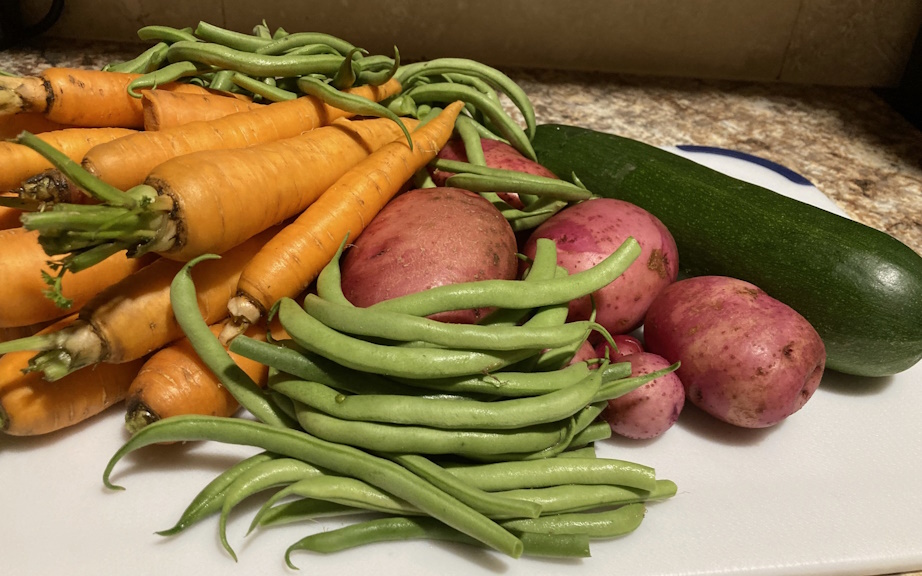Homestead gardening transforms winter days when you can reach for frozen green beans you’ve harvested yourself to create a hearty vegetable stew. There’s profound satisfaction in growing your own produce, achieving greater self-sufficiency, and reducing dependence on grocery stores while enjoying the fruits of your labor.
I recall past meals when the children and I would point out the things that came directly from our garden, kitchen, or mini-farm. Fried chicken from the hen house, a glass of raw milk, fresh-baked bread slathered with butter they helped make, thick slices of tomato, and steamed green beans from the garden. It is gratifying to know my family is eating quality food!
Gardening can be as simple or as complex as you like. It is so versatile; anyone can plant a garden, whether a newbie or an experienced gardener. When I savor a bite of homegrown goodness, it transports me back to summer. Let me guide you through the basics of homestead gardening and share some techniques along the way. So, grab your gardening gloves (and overalls), and let’s dig in!
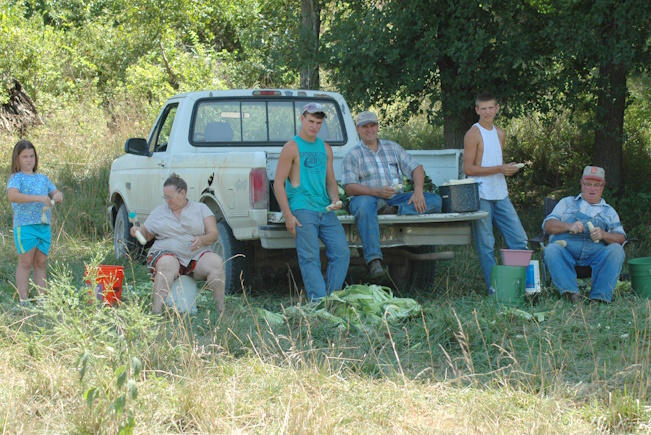
What is Homestead Gardening?
Homestead gardening is more than just planting a few tomatoes in your backyard. It involves creating a way of life by utilizing the land and co-existing with nature.
Why Choose Homestead Gardening?
Growing up in a farm family, it feels natural for me to plant seeds and watch them grow, but there are many reasons to create a garden.
Independence
One of the biggest perks of homestead gardening is the level of self-sufficiency it provides. There’s something empowering about walking out to your garden and gathering fresh, organic produce for dinner. Not only does it help save money on groceries, but you get to control your food source and what goes on it.
Health Benefits
Speaking of food, homestead gardening is a fantastic way to improve your health. The fruits and vegetables you grow are fresher (and more nutritious) than what the typical supermarket has to offer. Additionally, gardening is a wonderful way to engage in physical activity without needing to visit the gym.
Environmental Impact
By growing your own food, you are reducing your carbon footprint. Think about it: no packaging, no transportation costs, and no chemical pesticides harming the good insects. It is a win-win situation for both you and this precious earth we are responsible for maintaining.
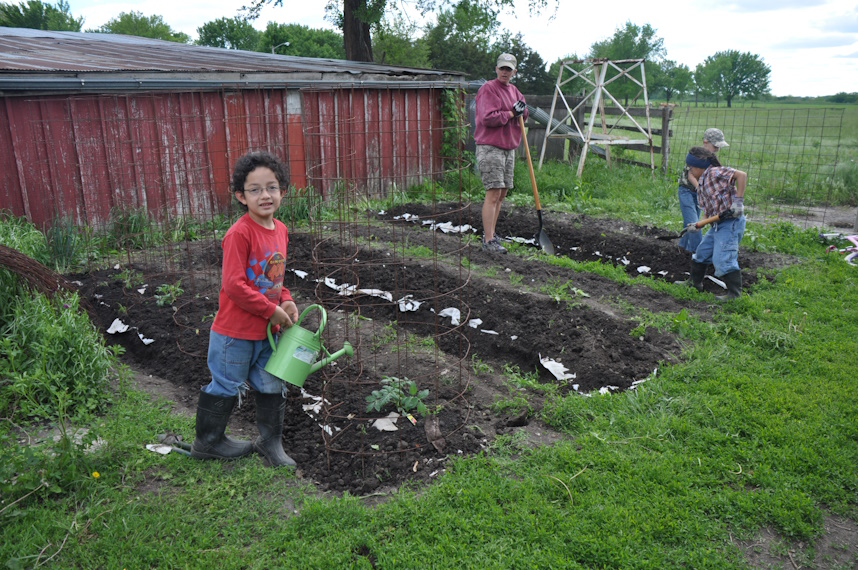
Planning Your Homestead Garden
Now that we have discussed the ‘why’, let’s dive into the ‘how’. I am an organizer at heart, so I love planning!. Gardening is a place that needs an organized plan. I find joy in deciding how best to use the land available to plant vegetables and herbs. There is a lot of value in setting out a detailed map of your garden. Did you know that placing basil plants next to tomato plants can help them grow?
Evaluating Your Space
First, take a careful and creative look at your available space. Do you have a large backyard, or are you working on a small urban lot? Don’t worry if you are short on space; even a balcony can be transformed into a productive mini-homestead.
Choosing What to Grow
When deciding what to grow, thoughtfully consider your climate, your family’s food preferences, and what thrives in your area. I recommend starting with easy-to-grow veggies and herbs like bush beans, squash, leafy greens, and parsley. As you gain experience, expand to more challenging crops.
Essential Elements of a Homestead Garden
Designing your garden space on paper is often a step that is skipped over. However, you can easily miss key elements of your garden or miscalculate your square footage if you leave this section out. If you are short on space, try using small containers for herbs, trashcan composting, or vertical gardening. Personally, I find raised beds are better for soil drainage and easier to maintain. A well-rounded homestead garden typically includes the following important components:
Vegetable Patch
This is the heart of your homestead garden. The vegetable section of your garden is where you will grow the bulk of your fresh produce. Determine what types of vegetables are good for harvesting or that you can keep in cold storage to use during the winter months.
Herb Garden
Don’t overlook the herb section of your garden! Herbs are easy to grow, are packed with flavor, and many have medicinal properties. They also attract beneficial insects to your garden. Herbs can be constrained to a tidy section of the garden, placed as a border, scattered throughout your garden, or periodically moved about via small planters. Herbs can add eye appeal to the overall design of your garden.
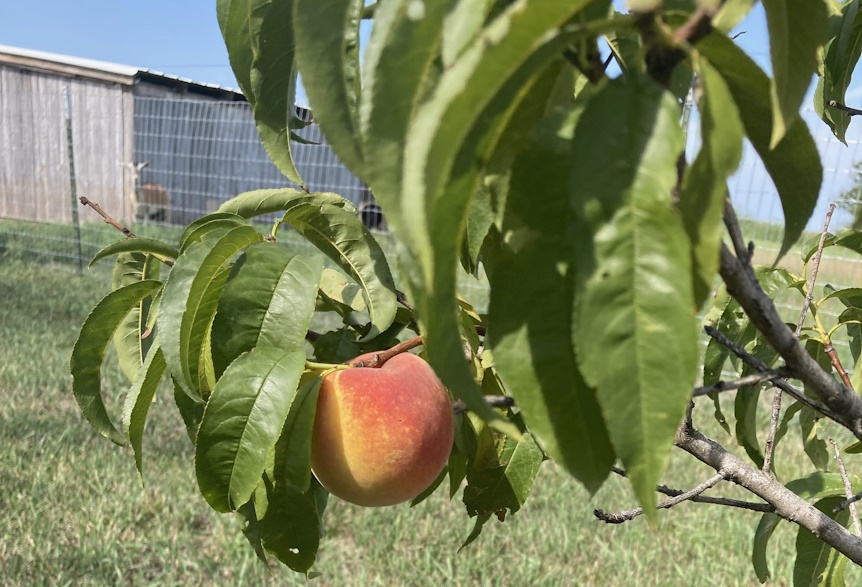
Fruit Trees and Bushes
While they take longer to establish, fruit trees and bushes can provide years of bountiful harvests. I remember planting our first apple trees; they were a favorite among friends and family who were able to share in the harvest or receive gifts of tangy-sweet apple butter. If at all possible, try to find a place for these long-lasting plants.
Composting Area
A compost bin or pile is vital for any homestead garden. It’s a great way to recycle kitchen scraps and garden debris while producing nutrient-rich soil for your plants. If you are fortunate enough to have livestock or neighbors with livestock, incorporating composted manure into your garden is a plus.
Soil Preparation and Management
Healthy soil is crucial for a productive garden. The pH level of your soil has a significant impact on the health of your plants. Most vegetables prefer a slightly acidic to neutral pH level between 6.0 and 7.0.
You may purchase a simple soil testing kit from your local garden center or, for a more detailed analysis, send a soil sample to your county extension office. Then, amend the soil. Which means to incorporate nutrients into the soil using compost, aged manure, or other organic matter to improve the soil structure and nutrient content. Remember, when you feed the soil, you are feeding your plants!
Planting Techniques for Homestead Gardens
To maximize your garden’s productivity, consider the following planting methods:
Crop Rotation
Rotating your crops seasonally helps maintain soil fertility and reduces problems with unwanted pests and disease. I like to keep a garden journal to track what and where I plant each year.
Companion Planting
Some plants love growing next to each other, like marigolds planted near vegetables, which helps repel pests. Root crops such as carrots next to an above-ground crop like lettuce may be planted closer together, which saves space. Because they are companion plants, they also encourage better growth. Note that some vegetables do not do well together and should avoid being paired together. There are many companion planting resources available.
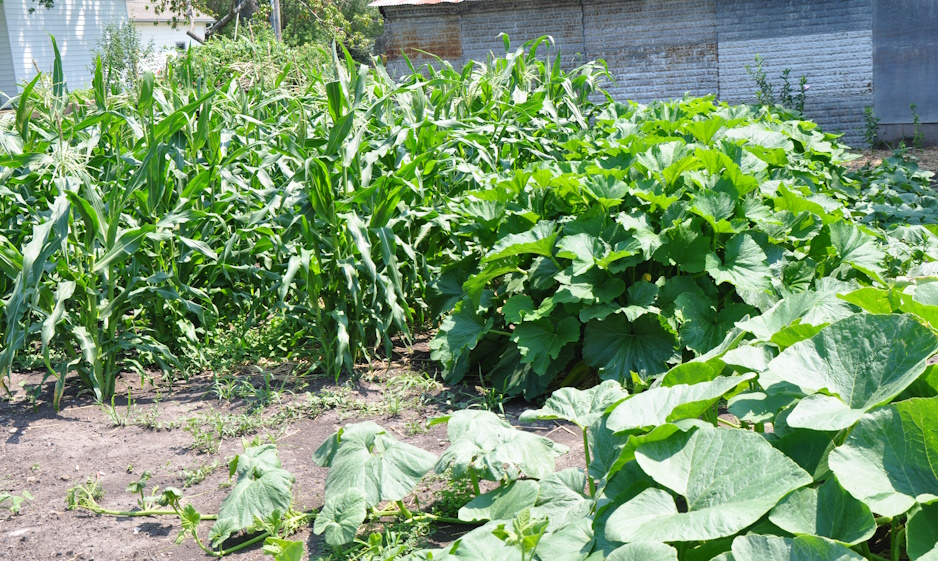
Succession Planting
This involves planting crops at staggered intervals to ensure a continuous harvest. It’s a great way to make the most of your garden space and/or extend your growing season. For example, I used to plant an entire row of lettuce, only to have it bolt and go to waste. I discovered that planting six little seeds every two weeks gives me a fresh supply of lettuce for months with little waste.
Water Management in Homestead Gardening
Water is precious in any garden, but especially in a homestead where you are aiming for self-sufficiency. Consider installing a rainwater collection system or using drip irrigation to conserve water. Mulching your plants can also help retain soil moisture and suppress weed growth.
Natural Pest Control Methods
Working with nature is the core philosophy of a homestead garden. That means using natural pest control methods rather than harmful chemicals. I’ve had great success with companion planting, composted manure, encouraging beneficial insects to thrive in the garden, and using homemade sprays made with ingredients like neem oil or apple cider vinegar.
Harvesting and Preserving Your Bounty
One of the pleasures of homestead gardening is the abundance of produce. Sometimes, it can be overwhelming. Share your harvest blessings with others, supplement with seasonal foraging, or attend the local farmers market to help pay for your garden.
Canning
Perfect for tomatoes, pickles, and jams. I still use my mother’s canning recipes! There is water bath canning and pressure canning. The acidity level of the fruit or vegetable determines if you can water bath or if you need to pressure can. Canning is perfect for long-term food storage.
Freezing
Great for berries, peas, and green beans. Nothing beats the taste of summer strawberries in the middle of winter. Freezing keeps the nutrients of the foods fresher than canning. However, freezing is short-term storage and generally relies on electricity. So, if electrical outages are common in your area, canning may be a better option.
Drying
Ideal for herbs and some fruits. Drying require fairly low humidity for air drying. However, many people use dehydrators to do the same job, but much faster and more efficiently.
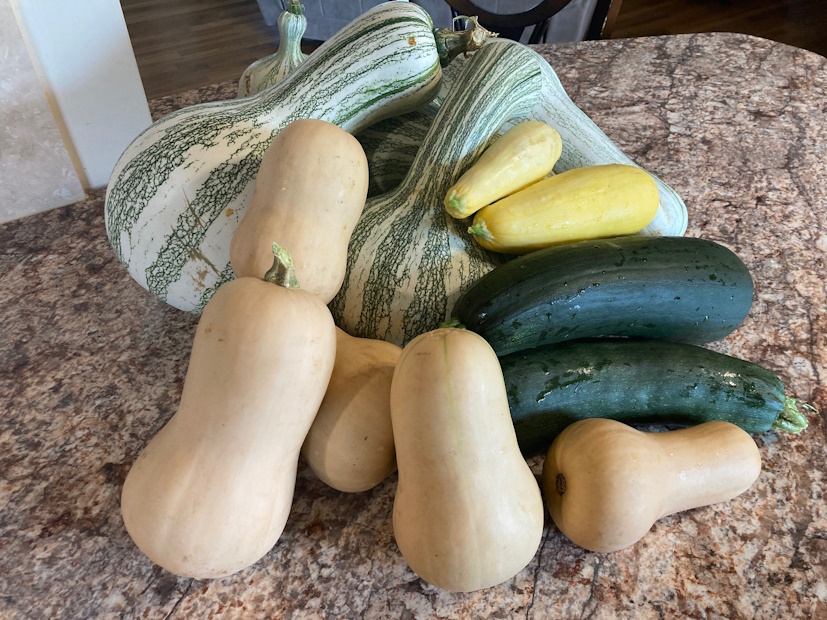
Expanding Your Homestead
As you get more comfortable with gardening, you might want to expand your homestead. Here are some ideas:
Increase Square Footage
When you are ready, start extending your garden in one or all directions, or add another section or style to your existing area. Have fun and be creative, but keep it practical for you and your family.
Adding Livestock
Chickens are a great starting point. They provide eggs, meat, and fantastic fertilizer for your garden. Milking or meat goats are another option. They are fairly easy to handle and eat a lot of weeds. Goats can add a dairy and/or meat source to your homestead. Be sure to do research before acquiring animals. For instance, goats need secure fences to keep them contained. Also, because they are herding animals, goats do not do well on their own.
Beekeeping
Bees not only provide honey but also pollinate your garden. There is an expense to starting a bee colony, but it is an investment in your land. Be sure to check local regulations before starting a hive.
Challenges of Homestead Gardening
Homestead gardening isn’t always easy or enjoyable. You will face challenges like unpredictable weather, pest infestations, heat, and the occasional crop failure. But don’t let that discourage you! Each challenge is a learning opportunity that can enhance your gardening skills.

Community Engagement and Resources
Remember, homestead gardening is not a one-season hobby but a new way of life and a new way of thinking. You are not alone on this journey. Meet other homesteaders in your area or on-line. Join gardening clubs, attend workshops, and explore your local farmers market. Seeking advice from individuals can offer helpful insights. Often, the best gardening tips come from chatting with fellow homesteaders!
So, What Are You Waiting For?
Homestead gardening is a lifestyle that connects you with nature, promotes self-reliance, and instills a sense of accomplishment. Whether you have acres or a small urban garden plot, you have the potential to create your own little sanctuary. I hope this nutshell view of homestead gardening has inspired you to step into the satisfying field of homestead gardening!
